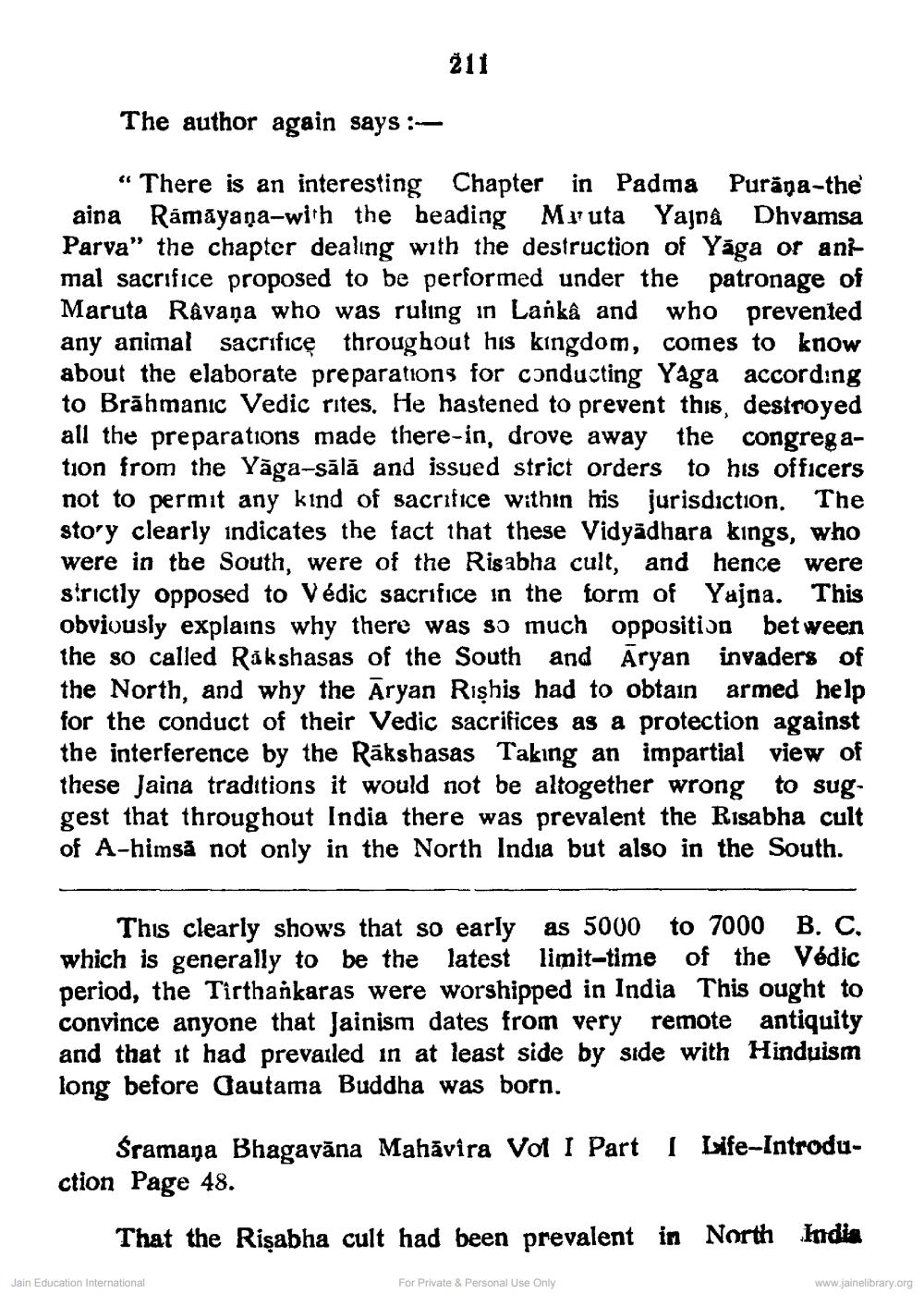________________
211
The author again says:
“ There is an interesting Chapter in Padma Purāņa-the aina Rāmāyaṇa-with the heading Mvuta Yajna Dhvamsa Parva" the chapter dealing with the destruction of Yäga or ant mal sacrifice proposed to be performed under the patronage of Maruta Ravana who was ruling in Lanka and who prevented any animal sacrifice throughout his kingdom, comes to know about the elaborate preparations for conducting Yaga according to Brāhmanic Vedic rites. He hastened to prevent this, destroyed all the preparations made there-in, drove away the congregation from the Yăga-sālā and issued strict orders to his officers not to permit any kind of sacrifice within his jurisdiction. The story clearly indicates the fact that these Vidyadhara kings, who were in the South, were of the Risabha cult, and hence were strictly opposed to Védic sacrifice in the form of Yajna. This obviously explains why there was so much opposition between the so called Rakshasas of the South and Aryan invaders of the North, and why the Aryan Rişhis had to obtain armed help for the conduct of their Vedic sacrifices as a protection against the interference by the Rākshasas Taking an impartial view of these Jaina traditions it would not be altogether wrong to suggest that throughout India there was prevalent the Risabha cult of A-himsā not only in the North India but also in the South.
This clearly shows that so early as 5000 to 7000 B. C. which is generally to be the latest limit-time of the Vedic period, the Tirthankaras were worshipped in India This ought to convince anyone that Jainism dates from very remote antiquity and that it had prevailed in at least side by side with Hinduism long before Cautama Buddha was born.
Śramana Bhagavāna Mahāvira Vol I Part 1 Life-Introduction Page 48.
That the Rişabha cult had been prevalent in North India
Jain Education International
For Private & Personal Use Only
www.jainelibrary.org




